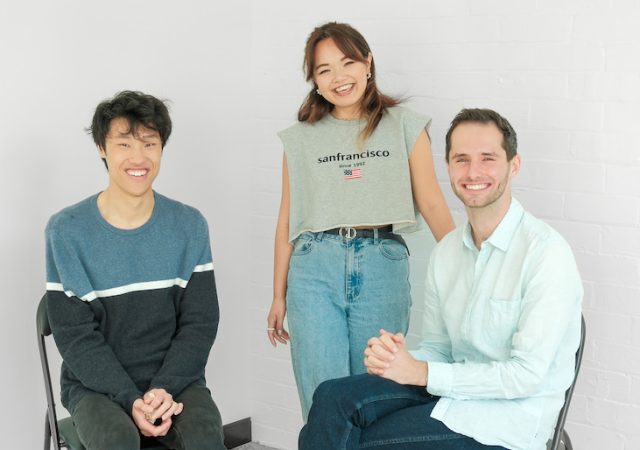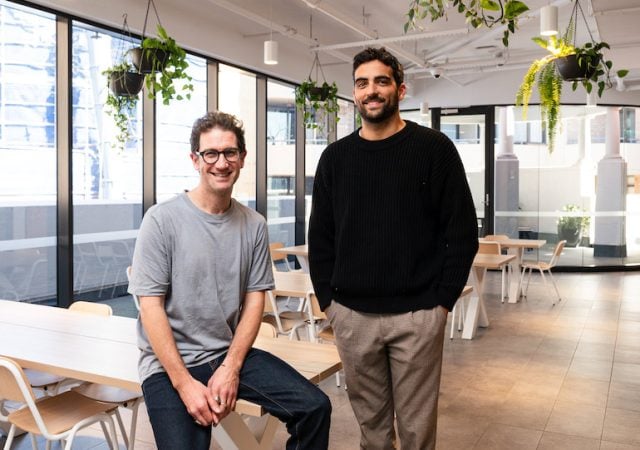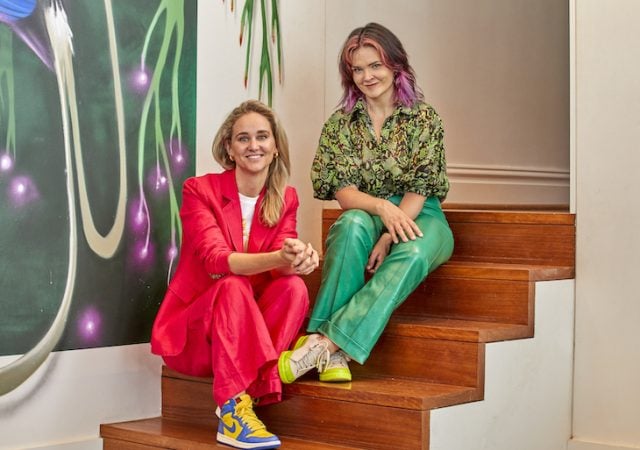Women’s participation and success in male-dominant industries is, at best, treated as an anomaly, and at worst, considered a farce.
‘Women in business’, ’women in tech’ and ‘women in politics’ have been the subject of debate for decades, with no end in sight.
And many men are tired of this conversation.

Pax Dickinson on Twitter
But so are women. If anybody thinks we enjoy repeating ourselves, they’re mistaken.
So why are we bringing it up again and again? Because what’s more exhausting than the conversation itself is the sexism and gender disparity that lives on.
Until industries stop alienating people who are ‘different’ – whether on the basis of their gender, race, sexuality or disability – this conversation will continue.
It’s the 21st century, no-one cares about your gender
Although this article resonates with all forms of diversity, the focus will be gender bias in the technology startup sector.
Women who work in this space still face discrimination. Sometimes it’s subtle, sometimes it’s outright hostile.
Yet, women are the biggest consumers of technology. According to Intel researcher Genevieve Bell’s famous “Big Ideas” talk, women are technology’s lead adopters, especially in Western countries where we use the internet 17 percent more than men every month.
We are more likely to use our mobiles devices, from talking to location services; and we’re the predominant users of social networking sites other than LinkedIn. Bell also says we are the majority owners of internet, health care and GPS devices.
Yes, women love technology. Got something that simplifies or enriches our lives? We’re interested.
At the 2012 Consumer Electronics Show, HSN revealed the results of a study, which analysed the behaviour of 2,000 adult consumers. The study indicated that women are more interested in purchasing tablets, laptops and smartphones than their male counterparts. In fact, the only category in which male surpassed female interest was flat screen LCD TVs.
“The tech industry has long been dominated by men – even at CES – but women are really the powerhouse in the household driving purchase decisions,” Jill Braff, VP of digital commerce for HSN, told Mashable.
“Women are highly engaged with the latest and greatest gadgets and technology.”
In a whitepaper published by Illuminate Ventures, High Performance Entrepreneurs: Women in High Tech, female-founded, venture-backed companies produce on average 12 percent higher returns.
So why then are women still treated as ‘inferior’?
Probably because old habits die hard.
To those who don’t believe sexism is well and truly alive in an industry that values disruption, let the following experiences enlighten you.
Kate Kendall, Founder of The Fetch and Co-Founder of CloudPeeps, recalls an incident in December last year, when she contacted a US portfolio company to enquire about an accelerator program. A representative of the company made a suggestive comment, saying ’the accelerator isn’t known for accepting women’. To translate, they were saying ‘don’t bother applying’.
Kendall, who moved to New York from Australia, says she faces adversity as a woman on a monthly basis. Back in Melbourne, she remembers a time when her very presence at a hacker event was questioned.
‘Err…why are you here?’
After speaking to Kendall for a minute, the man changed his opinion of her.
‘Oh you actually know what you’re talking about.’
“There is adversity everywhere you turn. There are always people who think you’re a lesser contributor to the tech startup community because you’re a female founder,” says Kendall.
To understand the severity of the problem, she suggests an exercise: replace gender with race.
“If you put some of these stories into a racial context, it really makes our blood boil. For instance, with the accelerator scenario, if they said ‘the accelerator isn’t known for accepting people of a particular race’ then that sounds incredibly bad,” says Kendall.
“It’s a great context and perspective shifter.”
Shala Burroughs, Former Executive Director at New York-based accelerator Women Innovative Mobile and Co-Founder of CloudPeeps, recalls a recent conversation that took a turn for the worst. She was speaking about the startup she was building with Kendall and its growing traction, when the person on the other end blurted out a question about her family plans.
“I’m not sure whether that person was having an awkward moment but I don’t think they would be having the same conversation with men … My birthing schedule is not related to CloudPeeps,” Burroughs says while chuckling.
Claudia Barriga-Larriviere, named as one of Shoe String’s Top Sydney Mentors and an Innovation Manager soon to join the BlueChilli X team, says that at previous jobs, she would make suggestions in meetings that were often shut down, not because they didn’t have merit, but because she suggested them.
It’s easy to dismiss this as paranoia, until you realise what happens next. The man sitting next to her made the exact same suggestion minutes later, perhaps slightly rephrased, and he got an entirely different response.
“They were acting as if it was the best thing they ever heard. I used to let moments like that slide. But I think you have to speak up and say, ‘Hey, that’s what I just said. Why was it a bad idea when I said it?’ I’ve recently started standing up for myself, because if I don’t do it now, it’ll be harder in three years,” says Barriga-Larriviere.
“And I don’t think this is solely a gender issue. It’s broader than that. It’s about diversity. Often, I was the only non-white female and the youngest of everyone in the room, so I think it’s about being different on the surface.”
One way to promote acceptance, Barriga-Larriviere believes, is through education – particularly on how to hire.
“It’s important to hire someone who doesn’t look and think like you. Great ideas come from differing opinions,” says Barriga-Larriviere.
The other solution is for ‘women to stand up and be a little subversive’.
Ever since Barriga-Larriviere started making noise about the issue, she’s been inundated with offers to join advisory boards and company teams. A lot of people have also turned to her for advice, valuing her opinion where before it was ignored.
So while it may seem daunting to draw attention to yourself in situations where you’re ‘the odd one out’, the worst you will face is a cold shoulder – which isn’t too big a risk when the upside is getting credit where credit is long overdue.
Barriga-Larriviere even goes so far as to suggest that rather than participating in ‘women-only’ events, which can be ‘exclusionary’, women need to be present at events where all the decision-makers mingle.
“Women’s groups are well-intentioned and have great principles, but it’s like creating our own special Olympics. It’s as if we’re saying, ’We don’t like the game, we don’t like the rules, so we’ll just play over here’. Those groups can make you feel a greater sense of belonging, but they become almost a rant vehicle. They create more silos,” she says.
“Instead, women should go to where all the decision makers are and cause a ruckus! … Women need to speak their mind, rather than wait for someone to call on them. It does take a lot of courage the first time, which is why I was silent for a while. But I think practicing [voicing your opinion] in front of people you’re comfortable with helps.”
Julia Hartz, Co-Founder and President of Eventbrite, communicates a similar sentiment, saying, “…it’s important for women to band together and empower one another, but not in an exclusionary way. We also need to partner with our male peers.”
Is this why some men are growing tired of this conversation – because, ironically, they feel excluded?
Burroughs suggests aggression and disapproval can be a result not being invited into the conversation – the same way women aren’t always invited to join advisory boards or included in a company’s R&D (Research and Development) process.
Kendall, however, views it a little differently, saying “feminist men (like Anil Dash) are getting most of the air-time at the moment”.
“It would be nice to hear from women. They have that extra empathy and perspective.”
She also believes women-only groups and events are needed at the moment to help women build enough confidence to actively participate in mixed-gender events.
“I think of things as a pipeline. You need to unlock a stage before people feel comfortable progressing. You need these initiatives in the early days, because it’s just not comfortable; and [other events are] not inclusive in the current ratio. We need this soft landing. We need this environment that supports collaboration and helps women understand that they can come along,” says Kendall.
It’s the ‘women-only networking, pseudo-entrepreneur events’ that she feels offer little value.
“I think it’s important to provide highly curated, quality events that support women,” Kendall says.
“Some of those networking events can be very pink; at the end, they give you a lipgloss in a bag. These kinds of events don’t speak to me, because they’re so feminine in the traditional sense that I can’t relate to them. I’m not there to get my free skincare sample, I’m there to find out about how to run my startup. I want to learn specific things like how to go about raising money.”
Melanie Perkins, Co-Founder and CEO of Canva, has a headstrong approach to the issue, admitting that the past six years getting her startup off the ground have been challenging, but doesn’t care whether her gender contributed to the degree of difficulty.
“Getting Canva off the ground has been difficult and taken a long time, more than six years. It was difficult starting our first company, Fusion Books and bootstrapping it to profitability, it was difficult getting investors to invest, it was difficult building a team, difficult to build our product. In fact every stage has been incredible challenging, but an incredible adventure,” she says.
“Has it been more or less difficult because I am a woman? I have no idea, nor do I care. If someone didn’t invest because of my gender, then we are certainly better off not having them as an investor and it is their loss.
“When I have a goal I see the mountains that I need to conquer, solving a problem, finding an incredible team, building a product that people will love. Nothing else has ever come into the equation. Every challenge fits into two baskets. Things I can change and things I can’t. I believe almost everything fits into the first basket and don’t bother worrying about the second basket.”
Role models, visibility and normalisation
Hartz says “awareness is key” to change. It’s about visibility. The more women we see thriving in their careers, the less unusual a ‘women in technology’ becomes.
“One thing I’ve learned in the last year is that if you can’t see it, you can’t be it … I believe that leaders in Silicon Valley are helping to shape the greatest generation of female entrepreneurs by empowering their daughters to innovate, succeed, and lead. Even if you don’t have a daughter, the potency of strong modeling has the ability to shape the next generation,” says Hartz.
“The kind of shifts we want to see in female empowerment takes time and I think we get frustrated at the seemingly glacial pace but really if you look at how far we’ve come and you look at the next generation, and I’m very optimistic.”
Kendall firmly believes the way to create strong role models for our next generation of women, is to nurture our current female founders.
“One of the things I believe is important in life is to be have people around that you aspire to be, or even get envious of. You can never really get envious of Steve Jobs or people that are different and further down the line. You get motivated by people that are a few steps ahead of you. It’s better to see other women who have done it, who are a little bit further along, because that unlocks the potential for younger generations to go ‘I can do that too’.
“I believe that you can change the younger and incoming cohort by helping the now. There are women who are already technical, who have startups, who are facing a lot of subtle discrimination. Promoting, supporting and funding current female founders actually helps the next generation to go ‘I can do that too’ or ‘I want to do that’.”
Currently, language also plays a role in promoting subtle sexism. As Kendall points out, “women tend to be pigeon-holed into marketing and communications.” There have been discussions around how men call it ‘growth hacking’ when they do it, but when women do it, it’s regarded as PR.
“When you’re male, you’re a ‘developer evangelist’. When you’re female, you’re a community manager,” Kendall says.
Burroughs makes an interesting point that there are more women succeeding in their technology careers than we’re made to believe.
“There are heaps of women in technology who don’t necessarily step up and talk about themselves publicly. For instance, not many people are aware that one of the founders of Cisco is a woman (Sandra Lerner). There’s also woman behind EpiBone, Nina Tandon. EpiBone is a bone graft that can grow in a matter of weeks. This is going to change people’s lives. These female founders are not getting the recognition they deserve,” she says.
Is it because women are obligated to be humble about their accomplishments or are they repressed?
“If a woman is vocal about her accomplishments, she may come across as inappropriately aggressive and overconfident. Women have to be nuanced in how they talk about their achievements. But if you’re a female founder, I think it’s a necessity to get out there and show everyone that you are present, that you are behind something that is making an impact on the world,” says Burroughs.
Sometimes, the greater the challenge, the greater the outcome.
Is it so bad that women have to come in with more experience, more customers, and more revenue to get the same privileges and respect that men do? Despite how unfair it appears, more is more. Working harder leads to agility, resilience and longevity.
“Being an entrepreneur is an incredible path. It’s challenging, it’s a roller coaster, it’s exhilarating, it’s my dream job. I get to work with the smartest people I have ever met, get to invent, get to realise my vision. It’s hard to say what the world needs, because from my experiences so far, I had to work incredibly hard to get people to invest, to convince my team to join me, to build our product and to grow it into something amazing. But the challenges along the path have shaped our company and helped us to fine tune the strategy,” says Perkins.
There is no shortcut to change, especially when we’re talking cultural change. To repurpose Sebastien Eckersley-Maslin, BlueChilli Founder and CEO’s theory, we need to build our ecosystem like a startup. The same way startups disrupt industries, women need to disrupt the startup culture like a startup. And this requires building support mechanisms from the ground up.
“There is no one way to get it all done but it is possible – that isn’t even a question. For me and Kevin (Co-Founder of Eventbrite), it’s taken a confluence of factors: priorities, strong partners, help from our family and childcare providers, and the ability to be flexible in our lives to maintain our sense of balance. Our lives are extremely binary at the moment: our passion is in Eventbrite and our love is in our family,” says Hartz.
We’re already witnessing a massive movement. Women are not asking for permission anymore. They’re unapologetic as they walk in and innovate. It’s about continuing in our path, impatiently.




















Trending
Daily startup news and insights, delivered to your inbox.